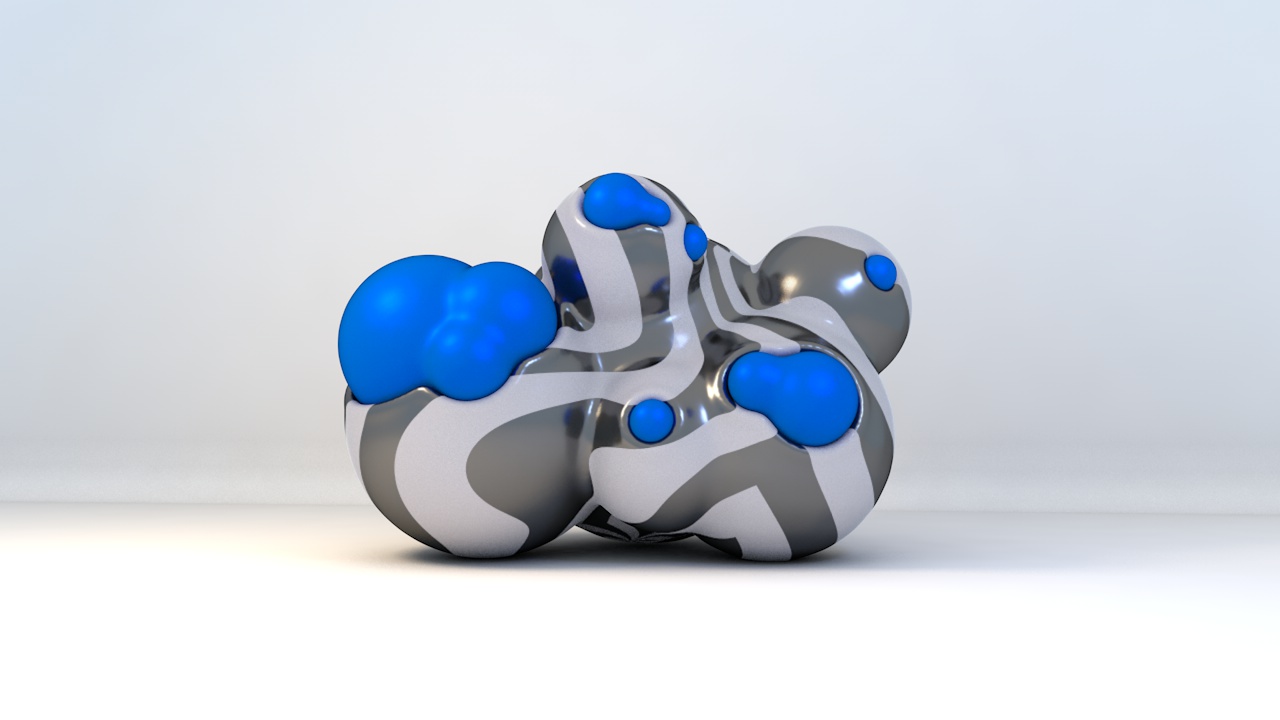-
Posts
2,052 -
Joined
-
Last visited
-
Days Won
119
Content Type
Profiles
Blogs
Forums
Gallery
Pipeline Tools
3D Wiki
Plugin List
Store
Downloads
Everything posted by HappyPolygon
-

Mixing politics and software. My thoughts on Maxon's decision to ban C4D.
HappyPolygon replied to a topic in Discussions
When you are part of an alliance (be it NATO or EU or whatever) you do what you are told to. MAXON is a Germany and US company, these countries have declared economic and technology sanctions to Russia. Software is technology. Don't see only one side. Russia has turned full Soviet and uses the same propaganda methods it used under Stalin and former politicians. BBC has stated that 13.000-14.000 people have been thrown to jail with 15-years time for just protesting in a so-called "democracy". Russian media do not report any other aspect of the war except what Putin approves (the usual special operation denazisation b.s.), they produce their own fake news and the Russian government has drafted social-media celebrities to support the propaganda reciting the same script. Russia has gone full medieval, gulag era is back. What would you do when 2 men in black and 4 police officers knock your door, give you a 3-page NDA with instructions of what they need you to do and the blackmail of jailing you right now if you do not agree. After that they bug your whole house and tell you any attempt on talking about this anywhere will result on you and people you know termination. Maxon and other DCCs did well on retracting from Russian territory because where you see "artist punishment" I see "prohibition on technology that can de used for mass brain-wash and disinformation". There is also an ethical aspect on this, something that Putin completely lacks. Of course the actual effect of banning is non-existent 'cause digital piracy in Russia was never regulated... But it's still something that will eventually bend Russia's infrastructure. Windows and Mac will soon be outdated, many other software and hardware will be filled with unfixed bugs and backdoors and the Russian militarization hacker movement will backfire when the West will be fighting back using better tools. In the 21st century wars are not fought only from ground, sea and air. Now we also have space and cyberspace fronts. It's funny to see the hated subscription system work in a satisfactory way... -
looks like a critical angle refraction referred as Total Internal Refraction in C4D. Unfortunately I don't use Octane. Try enabling Thin Wall
-

Primitives 2.0 - Community driven SceneNodes project
HappyPolygon replied to HappyPolygon's topic in Nodes
At the time being the most realistic goal for MAXON is to evolve SN to be in the same level as Grasshopper. -
(link's dead) You mean re-arrange that thing to to be projected on the 3D object or create that thing from the 3D object? If it's the first it's a simple yet time-consuming UV rearrangement in BP that I don't know if it's possible with an mp4 file. And have no Idea how it is supposed to look when finished. If it's the second I have no idea 'cause I don't use BP much. You can leave C4D do it's own thing and then pass it to PS and re-arrange then re-import it in C4D and correct it using the new map but this will work for a single frame. Either way reverse engineering is not how DCCs work. Reverse engineering is for programming. (unless you are talking on making something similar and not actually using this asset) This is the worst puzzle ever I don't even know how the orientation is supposed to be. There are 16 tiles with useful information here, how many stairs are there supposed to be 2 ? Are there duplicates ?(polygons using the same tile, 'cause I only see 3 tiles at the top). All tiles seem to be projected from the top except from tile 3,5, that's with perspective! I think you are missing tiles here.
-
Create -> Bake As Alembic, playback until the desired frame and then Current State to Object. The Current State to Object bakes geometry under deformers and effectors not under simulations
-

How to make a smooth transition between camera targets on an animation?
HappyPolygon replied to a topic in Cinema 4D
You should use the Camera Morph Tag. It will be much easier to transition to a second and third camera with different target tags than transitioning between target tags. https://help.maxon.net/c4d/r25/en-us/Content/html/TMORPHCAM.html?TocPath=Object%20Manager%7CTags%20Menu%7CVarious%20Tags%7CCamera%20Morph%7C_____0 -
hmmmm For me it loads fine in R25. It also gets imported with a Vertex Color Tag. (unlike what we see in the video tutorial) Have you tried importing the texture map in the Reflectance channel ? (disable all other channels) If that won't work maybe you need to upgrade because mtls have been impoved since R20.
-
Could you provide better resolution images ? I can't really compare the renders between C4D and Meshlab. I've downloaded Meshlab and imported a sample file with a toy submarine. I admit the exported UVs are awful. But it renders as good as Meshlab views it.
-
I think the main reason mtls are messy is the exporting app. An mtl from max12 is different from an mtl from max20 and blender 2.6. Could be the mtl format is not standardized or few really respect the format during implementation. The whole market out there is a mess with mtls not providing versions.
-
Use the same texture tag on all geometries as a group and set the projection as plane. Then go on texture mode and rotate that plane to be parallel to your surface.
-

R25: Moving Objects Will Not Stay In Holes. Losing sleep over this...
HappyPolygon replied to BLSmith's topic in Cinema 4D
I think that video contains a crucial element that could explain the priority conflicts. There is only one expresso tag. -
How long did that take you ? Doesn't look that slow to me. I wish I knew how to make an emboss in PS and convert it in normal map, that could be super fast.
-
Could you explain the Xpresso like in a pseudo-algorithmic way ?
-
It's easy. You set your scene and position your camera, then using the camera shader you can reproject it (frontal) on an other cube. the only things that really matter are the camera angle and focal length (have to be the same on both scenes).
-
Please consider filling some info on your Profile. I accidentally opened your file in C4D R12 and in my surprise it was working. We need to know your C4D version in order to provide a better assistance in the future in case of release feature sensitive solutions.
-
NFT art creators are shitting bricks right now... Imagine the faces of Russians when STEAM prohibits them from buying or playing their games...
-
When a nation (actually in this case Putin and his followers not all Russians) differentiates itself from the "west" then it oughts to acknowledge that if it wants to provoke any part of the "west" should make sure that it does not depend on it. Russia is cut-off of international sport events, international economic infrastructure and market, trade, travel agencies, you name it. I don't think there was ever such isolation imposed to a nation before. Putin thought that he would feel nothing just because he controls nuclear warheads. Well he better get used to this status because he is certainly not getting them back if he launces any nuclear weapons. You can go so far with attitude. Things will not revert to normal soon. No war of this kind of opponents ended in less than a month. Putin has a pride to save. He won't back down, he will get what he wants even if that means trampling over all Europe. He will face greater problems than loosing troops if he backs down. This is the inconvenient truth.
-
The sad part is that the Russian people are being punished for something they don't deserve. This will lead to more hate. The mistake Putin did was to invade a country that is part of an alliance (not officially). This invasion is not the usual invasion to take out terrorist organizations or rogue military parties even if he claims otherwise. This war is nothing like any NATO member ever declared in the modern era. But no Putin supporter will ever care about this difference. What I'm particularly annoyed by is the cynical and mute reaction of India and China. China decided to evacuate its nationals today after 6 days of war. India send directives for evacuation after all flights were banned. If those countries don't give a s**t about their citizens in danger imagine, in their state of human value, what they are capable of doing with them when they take part in a war. Either that or they are just that devoted to Putin. Source CNN: https://edition.cnn.com/europe/live-news/ukraine-russia-putin-news-03-01-22/h_da4d6354837f2c7b88002e0d4ff06e62 https://edition.cnn.com/europe/live-news/ukraine-russia-putin-news-03-01-22/h_c4ded23f058f8b48765d9156e929b057 https://edition.cnn.com/europe/live-news/ukraine-russia-putin-news-03-01-22/h_a0ee9a6ba77c55005dbac0c901bac9d9
-
oh, sorry I thought it was some kind of business card thing
-
MoGraph is your friend... Wait, R16 ? I've done it in R25 😞 I'll try and do it in R12 ... stem.c4dstem r12.c4d
-
To me it looks like this I whould never use a material displacement for that knind of detail because of the hard edges. It would require a high res for the texture and a high subdivition for the base model. It is also posible to do it with only one polygon - Normal Map emboss.c4d
-
How would you distinguish the patches if they cover the whole surface ? It's hard for me to understand exactly what kind of look you are after. Your description brings the Clump hair material attribute to my mind.
-

Link spline (Helix) animation to a polygon object
HappyPolygon replied to EnzoLuka's topic in Cinema 4D
What kind of formula did you use ? (effector, deformer, python ?) I only see a vibration tag. -

R25: Moving Objects Will Not Stay In Holes. Losing sleep over this...
HappyPolygon replied to BLSmith's topic in Cinema 4D
Which of these do you think is most appropriate ?

